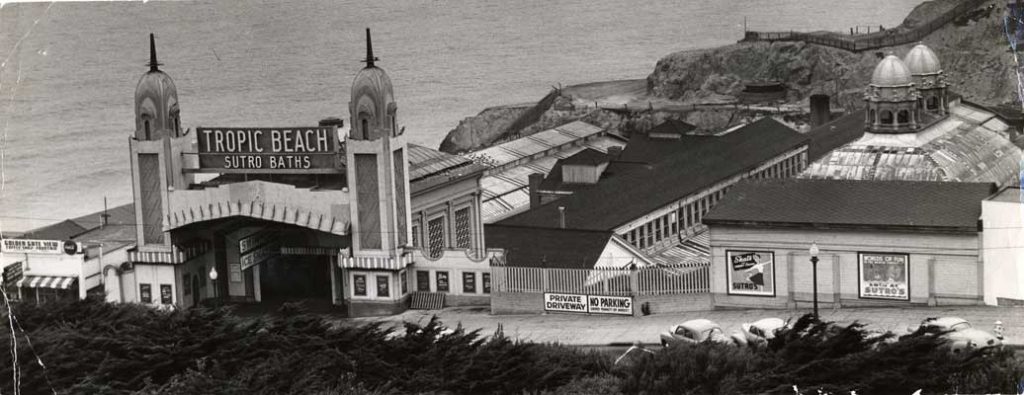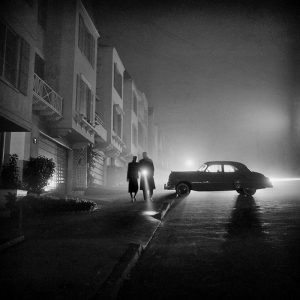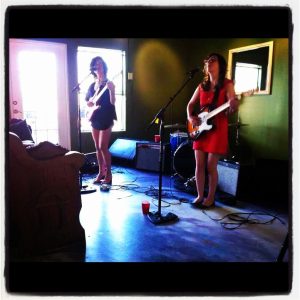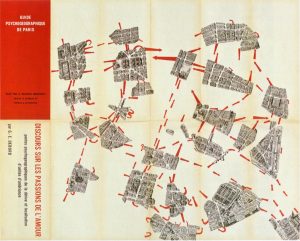The Sutro Baths, now a modern ruin, were a quintessential Victorian site of amusement, education, health, and leisure. It seems difficult to imagine the scope of Sutro’s from the remaining ruins today.
From the Wikipedia entry on the baths:
“A visitor to the baths not only had a choice of seven different swimming pools—one fresh water and six salt water baths ranging in temperatures—but could also visit a museum displaying Sutro’s large and varied personal collection of artifacts from his travels, a concert hall, seating for 8,000, and, at one time, an ice skating rink. During high tides, water would flow directly into the pools from the nearby ocean, recycling the two million US gallons (7,600 m³) of water in about an hour. During low tides, a powerful turbine water pump, built inside a cave at sea level, could be switched on from a control room and could fill the tanks at a rate of 6,000 US gallons a minute (380 L/s), recycling all the water in five hours.”

The baths were once serviced by a rail line, the Ferries and Cliff House Railroad, which ran along the cliffs of Lands End overlooking the Golden Gate. The route ran from the baths to a terminal at California Street and Central Avenue (now Presidio Avenue).
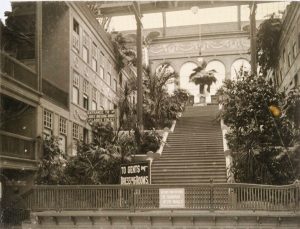
On this page are some scenes from the Victorian interiors of the Sutro Baths. Note that they recreate the peculiarly modern sensibility of looking, fetishizing, taking pleasure in, and even “playing” in, nature under glass. Victorian interiors are unique insofar as they fetishized a relation to nature that was irretrievably lost to industrialization and modernization. The very form of leisure at the baths is bound up with the practice of “looking” and “collecting” nature (including at the museum exhibits), as well as watching others play in nature (both aquatic and floral), albeit trapped, under glass and iron, indoors. Popular plants, such as ferns, and trees were also sold at Sutro’s. It is worth remembering that in the 19th century, bathing in salt water was considered healthy. The popularity of places like Sutro’s reinforced many practices of a peculiarly modern and modernizing knowledge and vision at play. This extends to the museum exhibits, many of which were purchased from the defunct Woodward’s garden, and even included a fake merman. Less discussed today by enthusiasts of the history of Sutro’s, these exhibits included dioramas of “exotocized” people as cultural “curiosities.” See the image below of the rickshaw diorama.
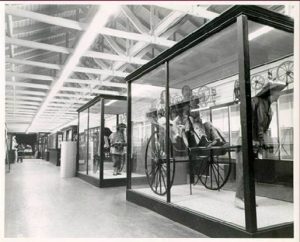
While the “scene” depicted may appear scientific and value-less, we should remember that race, which was “naturalized” in the 19th century, was experienced as something “real” through the pleasurable act of “looking” (at innumerable exhibits, sometimes of live human beings) at a reserve or distance, thereby constructing “whiteness.” (I believe the history of race and Sutro’s has not been properly told and is something that should be pursued in further detail in relation to SF modernism. By all means, someone needs to pursue this!)
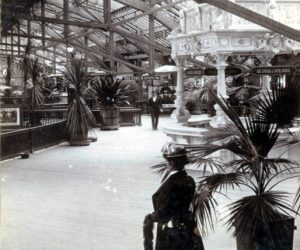
We will watch a documentary on Sutro’s that, while featuring interesting and important footage and images of the interior of the complex, completely whitewashes these other aspects of the exhibits. This should give us plenty to talk about.
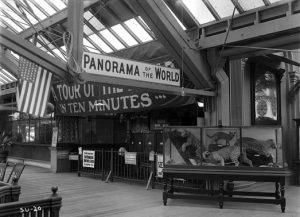
You can read and see more about the baths at the following links:
SF Public Library: Interior Images of the Sutro Baths
http://www.cliffhouseproject.com/environs/sutrobaths/sutro_baths.htm

